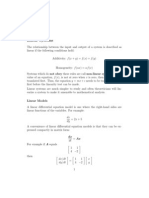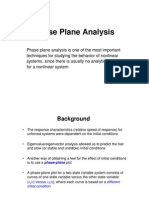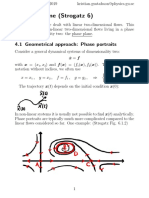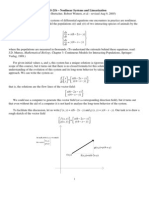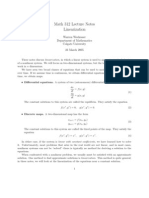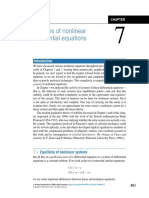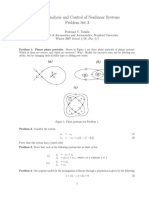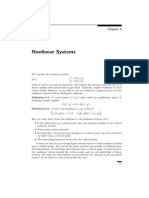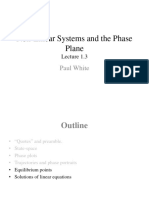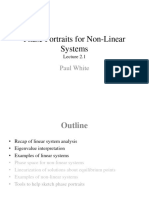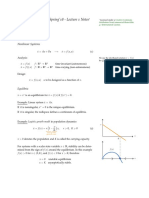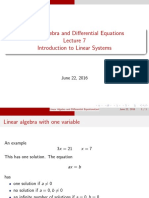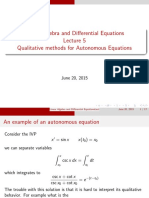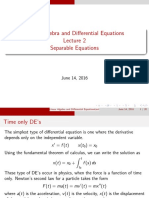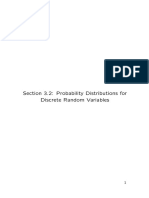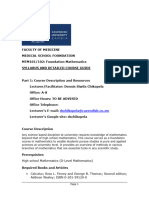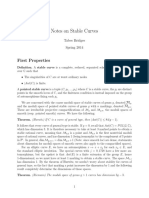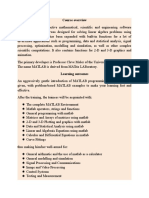0% found this document useful (0 votes)
86 views20 pagesLADE23 Nonlinear Systems
1) The document discusses nonlinear systems of differential equations and methods for analyzing them, including identifying equilibrium points, nullclines, and phase portraits.
2) Linearized stability analysis involves taking the Jacobian matrix at equilibrium points to determine stability based on eigenvalues.
3) Examples analyzed include the simple pendulum, damped pendulum, SIR epidemic model, and systems exhibiting nodes, saddles, centers, and a limit cycle.
Uploaded by
Roumen GuhaCopyright
© © All Rights Reserved
We take content rights seriously. If you suspect this is your content, claim it here.
Available Formats
Download as PDF, TXT or read online on Scribd
0% found this document useful (0 votes)
86 views20 pagesLADE23 Nonlinear Systems
1) The document discusses nonlinear systems of differential equations and methods for analyzing them, including identifying equilibrium points, nullclines, and phase portraits.
2) Linearized stability analysis involves taking the Jacobian matrix at equilibrium points to determine stability based on eigenvalues.
3) Examples analyzed include the simple pendulum, damped pendulum, SIR epidemic model, and systems exhibiting nodes, saddles, centers, and a limit cycle.
Uploaded by
Roumen GuhaCopyright
© © All Rights Reserved
We take content rights seriously. If you suspect this is your content, claim it here.
Available Formats
Download as PDF, TXT or read online on Scribd
/ 20


